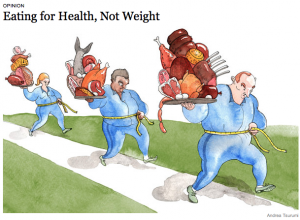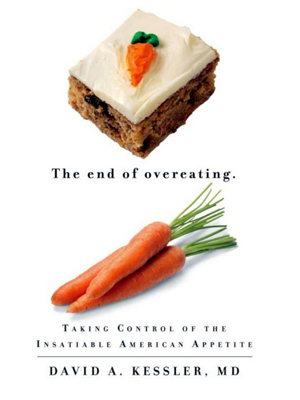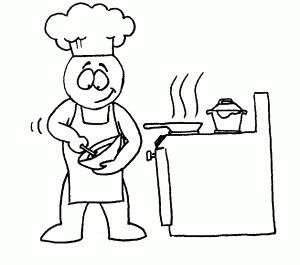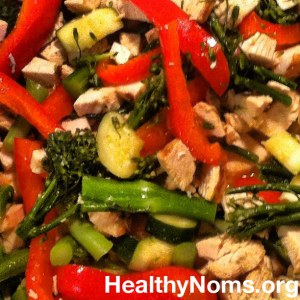 This piece by Dr. Dean Ornish, published in the New York Times earlier this week, really resonated with me. It drove home an important point that our health coach has been making, which is that the program we’re following is about more than losing weight. It’s about making choices that lead to optimal health.
This piece by Dr. Dean Ornish, published in the New York Times earlier this week, really resonated with me. It drove home an important point that our health coach has been making, which is that the program we’re following is about more than losing weight. It’s about making choices that lead to optimal health.
While we were certainly drawn to the program by the promise of losing weight, the reality is that the weight loss is a happy by-product of making healthier choices, which have myriad other benefits. In other words, the real takeaway from our program is not the weight loss, per se, but feeling better in our bodies, improving bodily functions, creating conditions to optimize longevity and, yes, looking better in the process.
The passage that really drove all this home for me was this astounding statistic near the end of the piece:
About 75 percent of the $2.8 trillion in annual health care costs in the United States is from chronic diseases that can often be reversed or prevented altogether by a healthy lifestyle.
Makes me that much happier that we’re following the path we are.

 That’s what we thought, too. Perhaps that’s because when we used to cook at home, we always made a big production of it. Used every pot in the cupboard. Layered one dish on top of another until we put away more leftovers than the food we had consumed. My sister used to tell me “every meal doesn’t have to be a gourmet extravaganza.” Still, we tried!
That’s what we thought, too. Perhaps that’s because when we used to cook at home, we always made a big production of it. Used every pot in the cupboard. Layered one dish on top of another until we put away more leftovers than the food we had consumed. My sister used to tell me “every meal doesn’t have to be a gourmet extravaganza.” Still, we tried!
 Instead of saying we “can’t have” something, we’re saying go ahead and have what you want, but adjust portion sizes and added fat accordingly.
Instead of saying we “can’t have” something, we’re saying go ahead and have what you want, but adjust portion sizes and added fat accordingly.
 After years and years of eating out more than cooking at home, preparing semi-homemade meals at home, using highly processed foods and lots of oils and butter, consuming portion sizes way larger than needed to satisfy basic nutritional requirements, and fighting weight gain sporadically with a variety of “magic bullet” diets, fasts and other desperate measures, this year Brian and I decided to get serious.
After years and years of eating out more than cooking at home, preparing semi-homemade meals at home, using highly processed foods and lots of oils and butter, consuming portion sizes way larger than needed to satisfy basic nutritional requirements, and fighting weight gain sporadically with a variety of “magic bullet” diets, fasts and other desperate measures, this year Brian and I decided to get serious.